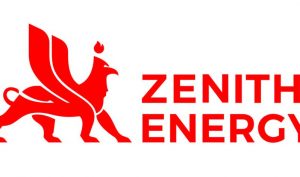Zenith Energy – the darkest hour is before dawn

By Dr Michael Green
There was good news for shareholders in Zenith Energy contained within the latest operational update this morning which included the unveiling of record oil production revenue from the vast onshore Muradhkhanli Block in Azerbaijan. This announcement also brought investors up to speed with the Electrical Submersible Pump (ESP) upgrade programme, the commissioning of a geological study, operating cost reductions and equipment upgrades.
In particular it was pleasing to hear that the final phase workover of the Z-21 well in the Zarbad Field has begun. Already the well has seen coiled tubing intervention which has successfully cleaned out the entire tubing string to a depth of 3670 metres, circulating and drilling out mud and debris that had accumulated in the well since it last produced 30 years ago. The casing has also been cleaned out from 3670 – 3688 metres, but no further due to the restricted diameter of the tubing. So, the plan is to now pull the whole tubing string and clean out the casing to the well’s total depth of 3982 metres. This should, finally, properly sort out the problem and allow the well to be put on production.
The entry of record oil production revenue being generated in Azerbaijan in the month of March 2018 was also welcome. The company’s revenue from this country, gross of commissions and transportation expenses totalled around US$575,000 for oil production, with an Urals market price around US$67 per barrel.
Zenith’s operational team has decided to shut-in 31 production wells in the Muradhkhanli and Jafarli oilfields as they were proving to be uneconomic due to an average water cut of 99%. The result is that Zenith currently now has a total of 34 active production wells averaging a total of 300 bopd. We know that in all, the company has 75 wells capable of oil production. Moving ahead, as part of the systematic workover programme, the operational team will be reviewing each shut in well and exploring the potential of recompleting in different zones or shutting off excess water production in order to increase the overall economic oil production from the project.
The ESP upgrade programme seems to be going great guns. In less than two months, Zenith’s team has installed 11 ESPs with the two remaining ESPs expected to be in place by the end of May 2018. This programme was designed to basically stabilise existing production from selected wells along with making sure that there no production stoppages which had often been happing from using older ESP technology. Also, on the equipment front, the new A-100 truck-mounted workover is now expected to be delivered in June 2018 following some important upgrades.
Ahead of beginning development drilling activities later on this year, the company has commissioned a geological study to allow for a structural re-interpretation of the seismic and well data from the many wells drilled in the field area. This work has already led to the identification of a new previously unexplored Mesozoic carbonate prospect.
In addition, in-house personnel have now assumed full control of all operational activities. There is expected to be a significant reduction in operating costs going forward now that the non-Zenith operational teams have stood down. This move should allow for better operational continuity and allow the experienced gained on the field to be used by the in-house team to improve operational performance in the future.
This announcement does show that real progress is now being made in the workover programme which, it is fair to say, has not been that straightforward so far. Truth is that the company is in an enviable position of having the largest onshore oilfield in Azerbaijan. In a systematic programme of both workovers and rehabilitation, Zenith’s own highly experienced team has been working hard to unlock value. Despite the obvious upside potential, historically the vast oil field was badly neglected, and it has taken longer and cost more to put matters right than management expected.
Zenith’s expansive 642.4km2 Muradhkanli Block consists of a total of three under-developed oil fields. Production is set to treble to 1,000 bopd this year at a cost of $11/barrel. Indeed this target has been set in stone for investors by CEO Andrea Cattaneo. Longer term this is just the start, as in the past the block produced 15,000 bopd using old Soviet technology.
In our last updated research note on 8th November 2017, we reconfirmed out Conviction Buy stance with a 22.28p per share valuation when the shares were standing at 10.875p. The stock has continued to slip despite buoyant oil prices and it is apparent that many investors are beginning to give up the ghost with regards to the continued delays. When we consider the key expectation of 1000 bopd by the end of the year, CEO Andrea Cattaneo’s continued purchasing of stock showing his faith in the end game and the new potential acquisition in Indonesia (full appraisal note to come from us) we thus remain buyers, indeed believing the old adage “the darkest hour is before dawn” being particularly apposite here. Buy.
